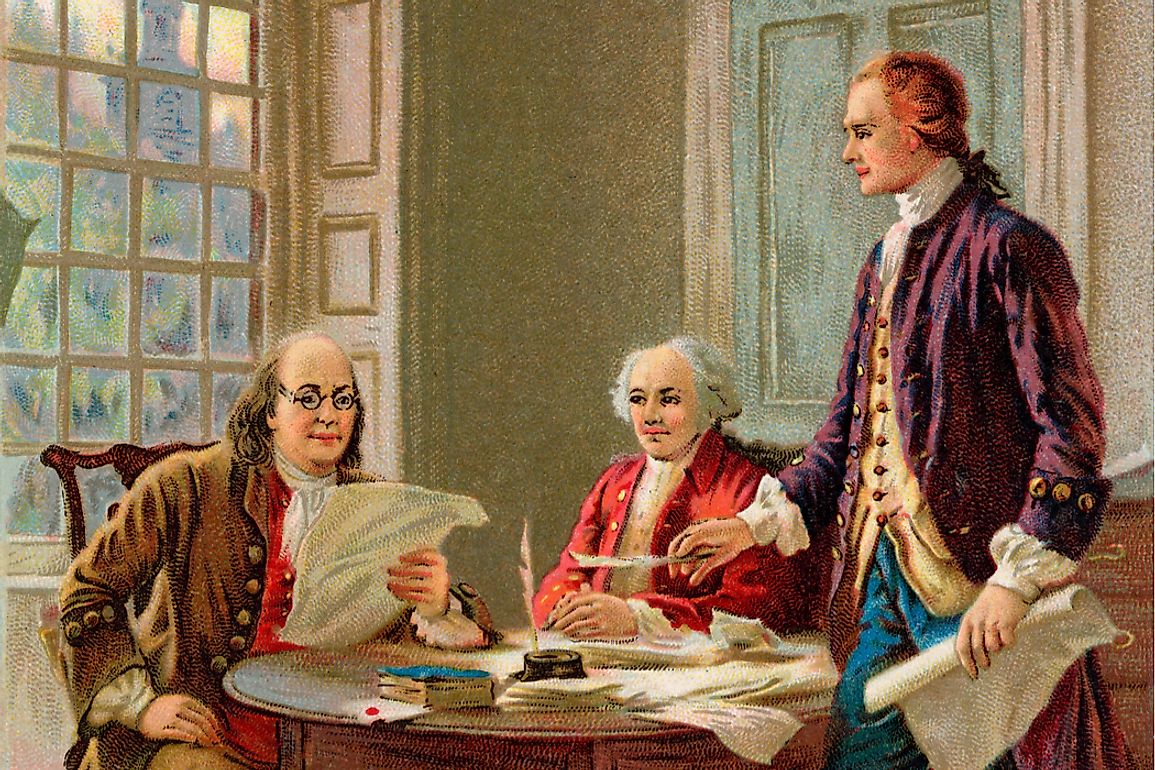Who Was the Oldest Person to Sign the Declaration of Independence?

The Declaration of Independence was signed in the United States on August 2, 1776. There has been a debate on the date with some historians stating that the signing and approval took place on July 4, 1776. The event took place at Pennsylvania State House. The Declaration of Independence led to the formation of the United States of America thereby proclaiming an end to colonization by Great Britain. 56 delegates from the 13 former British colonies signed the declaration. The oldest person to sign the declaration was Benjamin Franklin at the age of 70.
Who Is Benjamin Franklin?
Benjamin Franklin was a famous polymath who was involved in the struggle for independence and an advocate of colonial unity. As one of the Founding Fathers, Franklin was a key figure in the drafting and signing of the declaration of independence.
Early Life and Career
Franklin was born on January 17, 1706, in Boston, Massachusetts. He was the son of Josiah Franklin and Abiah Folger. He grew up in Milk Street where he joined the Boston Latin School. At 12 years, he joined his brother James as a printing apprentice. At the age of 17, he went to Philadelphia, Pennsylvania where he got a printing job. In 1927, Franklin mobilized other tradesmen to form a group known as Junto which formed the first large library in Philadelphia.
Franklin’s Inventions and Scientific Inquiries
Franklin was an inquisitive person who made major scientific inventions. In 1746, Franklin began exploring the concept of static electricity leading to his invention of the negative and positive poles. He invented the conservation of charge principle and in 1748 made the first double plate capacitor which led to the modern battery.
In 1750, Franklin flew a kite in a storm to demonstrate that lightning is electricity. Through his experiments, he proved that sparks of electricity can be found in the clouds. The concept of lightning rod was invented and used to secure buildings from fire by lightning.
Franklin studied demography. His findings made the colonial British economists adjust policies. His other contributions were in meteorology, refrigeration process, musical instrument, and energy-saving stove. In the field of sea voyage, he studied the ocean currents and identified the Gulf Stream which shortened the voyage.
Franklin and the American Revolution
In 1754, Franklin attended a meeting of representatives of colonies in Albany, New York. There, he proposed that the colonies need to be united as a congress. Though the proposal was not adopted, it laid the foundation for the Articles of Confederation which was ratified later. He was voted to the Pennsylvania assembly in 1751 where he advocated for rights of those colonized. He objected the Stamp Act and other oppressive regulations imposed by the British. In 1775, he was elected as a delegate to the Second Continental Congress which was the organ responsible for governing America.
In early 1776, Franklin and others formed a committee of five members to draft a declaration of independence. In the draft, all the 56 delegates proclaimed sovereignty and independence from the British rule. All the 13 colonies, which by then were at war with Great Britain, declared that they would no longer be under the British empire. All appended their signatures to the document.
Franklin’s Later Years
Franklin spent his last years in Philadelphia and died on April 17, 1790, at the age of 84 years and three months. All his property was bequeathed to Boston and Philadelphia. His legacy is commemorated to date with $100 bill bearing his image. Portraits and Monuments have been erected in his honor while major institutes have also been named after him. He is remembered as a great printer, inventor, diplomat, author, politician, scientist and above all a statesman.











